
Salty Sam’s Fun Blog for Children
Number 219
Peacocks
Hello Everyone

Have you ever visited a large garden, maybe of a stately home, and heard a spooky, eerie call in the distance?
Chances are, that this was not a ghost – but a peacock.
At the back of Rocky Bay, there is a big mansion owned by a retired rock star. His name is Zig Zagger. He has peacocks in his garden, and you can hear them some way off.
These birds are native to the woodlands of South Asia, but are often found in big gardens in Britain, and other countries, adorning large lawns.
They used to be eaten in mediaeval times, but apparently didn’t taste very good.
Nowadays they are just kept as pets.
Did you know that the word peacock is really the word for the male of the species? A female bird is called a peahen. The babies are called peachicks. These are just like the words we use for chickens, aren’t they?
The correct name to use for all of these is ‘peafowl’.
There is the blue peafowl from lndia and Sri Lanka and the green peafowl from Mayanmar/Burma, lndochina and Java – which are countries further to the east. Java is an island in lndonesia.
There is also a species from Africa called the Congo peafowl.
Probably the first thing you think of when you think of peacocks is their magnificent, eye-spotted rear feathers which they flick up into a fan shape to impress anyone who is looking – but of course most importantly to them, the peahens. Scientists believe that the females choose a mate according to the quality of these feathers.
The proper name for these feathers is ‘train’ because they are not really a tail.
Peacocks can fly, and their folded train streams out behind them through the air as they do so.
Both the males and females have a crown of feathers on their head.
Occasionally, you will see a bird that is completely white, but they are quite rare.
When you see peafowl in public gardens, you will notice that they are quite tame. They naturally have a fearless nature and people walking by don’t bother them; but they don’t like being startled so you should never try to scare them.
Peafowl are omnivores. You probably already know that that means they eat lots of different things that are vegetable and animal.
They eat plants and insects and other small creatures that they find. They eat grain if they are kept as pets and they also like a bit of fruit occasionally as a treat.
The feathers that make up the train are beautiful colours and have been fashionable as decoration for clothes and hats and headbands in the fashion industry at various times in history. They were especially popular in the 1920s.
The peacock is the national bird of lndia. lt is considered a sacred bird in lndia and China where it is thought to symbolize beauty, love and prosperity. ln Buddhism, peacocks symbolize purity.
To the ancients they were a sign of immortality. They were also a symbol of renewal as the peacock replaces his feathers every year.
Because peacocks shed their feathers naturally, people collect them and sell them to anyone who would like to use them for crafting. They can also be used as decoration in a room. They can be displayed in a vase or put on a wall.
Emily has a collection of them in a vase in her bedroom.
Bye bye everyone – don’t forget to subscribe to my blog!
lf you like my blog, please support it by telling all your friends and followers about it.
Thank you!
And see you again next Fun Friday!
Love and kisses
Salty Sam

www.christina-sinclair.com


Bill and Bob’s Joke of the Week![]()
![]()
Bob: So do you know what feathers are good for?
Bill: Yes – birds!

Salty Sam © Christina Sinclair 2015
Unauthorized use and/or duplication of material from this blog without express and written permission from this blog’s author and owner is strictly prohibited.
Links may be used to www.christina-sinclair.com

Picture Gallery
 A peacock
A peacock
 A peacock displaying his train
A peacock displaying his train
 Albino peacock’s have pink eyes
Albino peacock’s have pink eyes
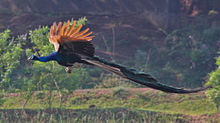 A peacock in flight
A peacock in flight
 Part of a peacock’s feather
Part of a peacock’s feather
 Feathers used in fashion
Feathers used in fashion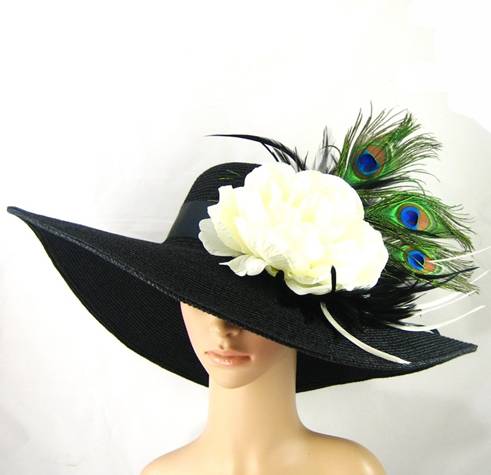 A decorated hat
A decorated hat



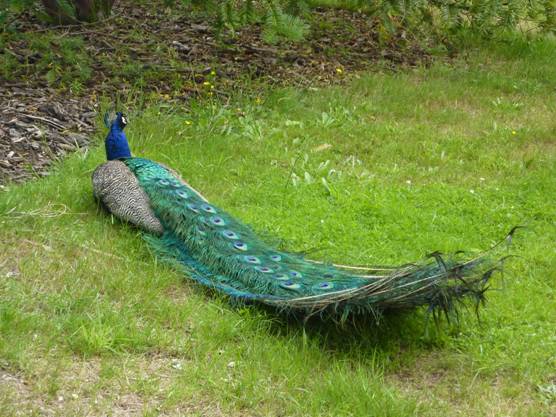
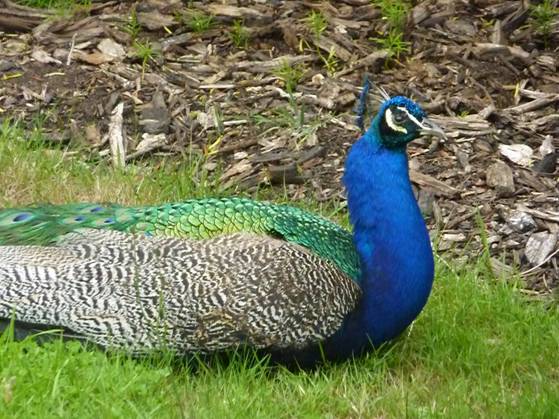


 THE SALTY SAM NEWS DESK
THE SALTY SAM NEWS DESK

Bill and Bob were telling me about a very funny lesson they had this week in their class with Miss Pringle at the Rocky Bay Primary School.
She gave each child a piece of paper with a word written on it.
Each word described a way of talking.
She explained to the class that when they write stories it is good to use lots of different words and not the same ones all the time like ‘got’ and ‘nice’ and ‘said’.
So she wanted to get them thinking about other words they could use instead.
And in that lesson she wanted to show them how many other words there were to use besides ‘said’.
So they should use a dictionary to help them and write a description of the word on their piece of paper – of course they couldn’t say the actual word that they were trying to describe.
Then they were going to read out the description to the rest of the class and see if they could guess what the word was.
They could even talk in the manner of the word that they were describing.
The children tried their best to do this, but sometimes the giggles got the better of them and unfortunately the giggles spread through the whole class.
Miss Pringle thought that in spite of it all, they probably had learnt something by the end of the lesson – and would be displaying a larger range of vocabulary in their writing in future.
Then she went home and had a cup of tea.
![]()
So if you would like to use the words that the children were learning, here they are – if you don’t know what they mean, you will find them in a good dictionary.
- Whisper
- Mutter
- Splutter
- Stutter
- Sneer
- Gasp
- Shout
- Bellow
- Mumble
- Moan
- Snap
- Stammer
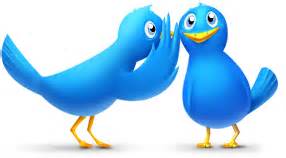
Also this week, Auntie Alice made some skinny, blue jeans for Emily’s doll.
I expect you would like to have the pattern too.
NEWSDESK MINIMAKE
SKINNY JEANS FOR A 12” DOLL
This is a lovely outfit for doing the housework in – but it is equally nice for just relaxing.
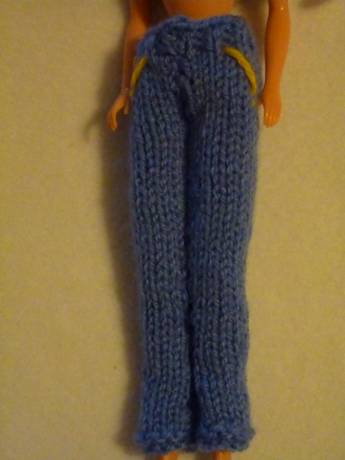
SKINNY JEANS (KNIT TWO)
Using 4mm knitting needles and blue dk yarn cast on 12 stitches
Knit 2 rows of garter stitch
Knit 16 rows of stocking stitch
Increase 1 stitch at the beginning of the next 2 rows of stocking stitch (14 sts)
Knit 8 rows of stocking stitch
Increase 1 stitch at the beginning of the next 2 rows of stocking stitch (16 sts)
Knit 10 rows of stocking stitch
Decrease 1 stitch at the beginning of the next 2 rows of stocking stitch (14 sts)
Knit 4 rows of stocking stitch
Change to 3¾mm knitting needles
Knit 1, purl 1 to end to create ribbing
Repeat this row once for hipster jeans and 3 times to bring the top of the jeans to the top of the doll’s waist
Cast off
*If your doll’s legs are bigger than the legs of the doll in the photograph, add 2 stitches to the width of the knitting
TO MAKE UP
With right sides together and using over-sew stitching, sew together the front and back of the top of the jeans and then the inner leg seams.
Decorate the pocket detail by using a stitch of yellow yarn across the front of the hips making sure that the ends of the yarn are secured.
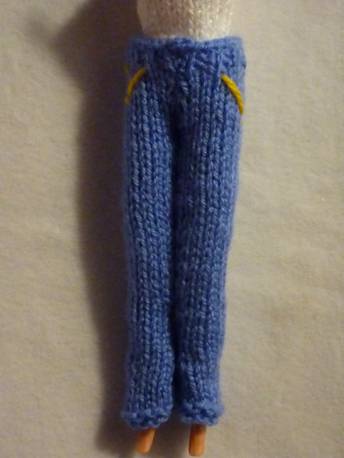

*********************
TO ADVERTISE ON THIS BLOG
PLEASE CONTACT:
christina.sinclair.ads@aol.co.uk
*********************


Quick Quiz
Fill in the gaps to find shades of blue…
A _ R _ O _ C _
T _ R _ U _ l _ E
A _ U _ E
C _ B _ L _
T _ A _
N _ V _
D _ C _ E _ G

The first shade of blue



lt’s the Weekend!
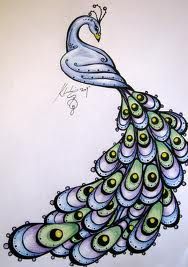
HOW TO MAKE A HEAD COWL
This cowl is superb for really cold weather.
Pull it over your head with the ribbing at the top and it can sit around your neck.
As the temperature drops, you can pull the cowl up over your nose and ears and then when it is really, really cold you can pull it up over the top of your head – and then you can even put a coat hood over the top of it as well.
In the garment in the picture, different yarns were used for the ribbing and the main body of the cowl. The ribbing is made of sparkly yarn and so will sparkle in winter sunshine or when it catches light on a dark winter’s evening.
You could use a different colour altogether if you wanted to.
It is made in two halves so that you don’t have to have too many stitches on you needle at one time.
HEAD COWL (KNIT TWO)
CHILD
Using 3¾mm knitting needles and dk yarn cast on 50 stitches
Slip 1 (k1, p1) repeat the last 4 stitches until 5 stitches remain k2 p3
Repeat this rib row 11 times (12 rows of ribbing)
Change to 4mm knitting needles
Cast on 2 stitches at the beginning of the next 2 rows of stocking stitch
Continue knitting stocking stitch on these 54 stitches for 100 rows – the whole cowl will measure about 40cm
Check this is enough to reach from your forehead to the nape of your neck
Knit 6 rows of garter stitch
Cast off
WOMAN
Using 3¾mm knitting needles and dk yarn cast on 58 stitches
Slip 1 (k1, p1) repeat the last 4 stitches until 5 stitches remain k2 p3
Repeat this rib row 11 times (12 rows of ribbing)
Change to 4mm knitting needles
Cast on 2 stitches at the beginning of the next 2 rows of stocking stitch
Continue knitting stocking stitch on these 62 stitches for 120 rows – the whole cowl will measure about 47cm
Check this is enough to reach from your forehead to the nape of your neck
Knit 6 rows of garter stitch
Cast off
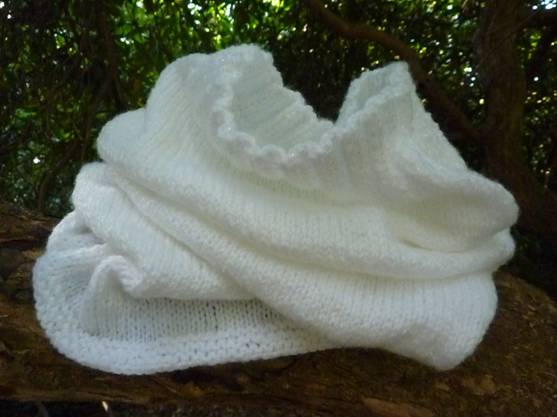
Please note that the material on this blog is for personal use and for use in classrooms only.
It is a copyright infringement and, therefore, illegal under international law to sell items made with these patterns.
Use of the toys and projects is at your own risk.
©Christina Sinclair Designs 2015


Quick Quiz Answers
A l R F O R C E
T U R Q U O l S E
A Z U R E
C O B A L T
T E A L
N A V Y
D U C K E G G

Duck egg blue


